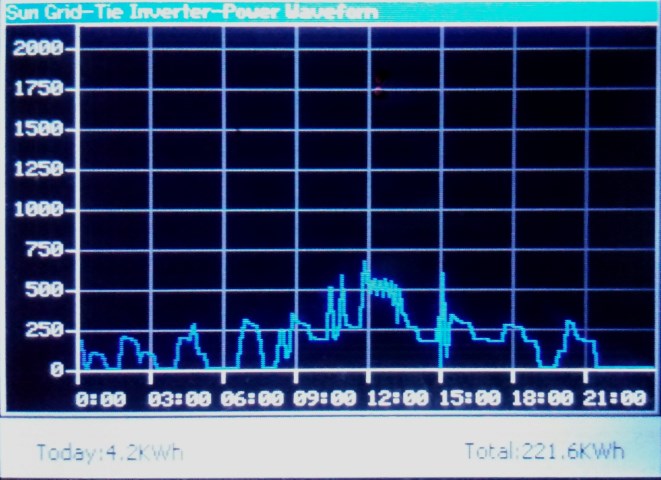I chased one and it wasn’t what I thought it would be.
A big part of living off grid or keeping the power bill down if you are on grid is efficiency. Try as you may to get everybody in the household to turn off unused lights or to not leave the fridge door open, there can still be waste. Some of this comes from “phantom loads” from devices that still use power, even when they are turned “off.”
Our first TV was a big wood cube of a Magnavox. It had no remote. The switch was on or off. Thank goodness, because all those vacuum tubes used an awful lot of power. Today, my TV has a red light down in the corner and it is glowing when the TV is off. Under the covers, there is a microprocessor that is constantly processing. Oh, the whole off-state consumption is less than just one of the tubes in the Magnavox, but it is power consumption, all the same.
Next to the bed there is a phone charger. It always draws a miniscule amount of power. At the kitchen table, the laptop charger is always drawing. The satellite and wifi gear upstairs is always drawing a lot power. My wife’s rechargeable hand vac stays plugged in long after it is charged. I have a shelf full of tool chargers out in the Solar Shed and they all have a light glowing, even when the batteries are topped. Look around your house and you may find dozens of such phantom loads.
Hey, I’m using free solar power, so what’s the problem? It was a big problem when solar was $10/watt. Not so much, nowadays when John always has super deals on solar power, but come a cloudy day, you can get deeper into your battery, which reduces its life, or you might be on the edge of capacity with your inverter.
It may be it doesn’t matter and it may be that you are just obsessive about efficiency. Handle it your own way.
If you do want to track down these little varmints and are on “lockdown”, now might be the perfect time. There are several tools available to help in your quest but the eyeball is cheap and effective. If it has a glowing LED and it isn’t do anything, “sic’em.” The original portable power meter was the “Kill-a-watt.” You plug it in the wall and plug the suspect into the outlet on the Kill-a-watt. The display tells you how many watts are burning away.
A switched outlet strip is the traditional way of dealing with these offenders. I don’t know about you, but at my house it seems that nearly every outlet in use is behind a piece of furniture. The switched outlet strip moves things into the open. You still may decide to leave that load running if, say, your TV wants to reprogram itself after every power interruption. You don’t want to dash in to view your favorite soap opera, only to have to wait an eternity for the programming to complete.
Another way to determine that you have phantom loads is through the instrumentation of your solar gear. My recent battery upgrade to my grid-tie system let me see what was going on at night. Let’s face it, traditional grid-tie doesn’t work very well at night! What IS this stuff going on all night? Power cycling higher, lower, off, and back on. It almost looks like a fridge, but all of my fridges are on the full-on solar circuits.

I initially blamed my laser printer. That thing is possessed, I swear, and find it best to just leave it unplugged. I unplugged and found the instruments reading zero, so I thought the problem was solved. Then it came back, sometimes burning hundreds of watts.
In the “before times” I might have taken longer to track this down, but since we are “in the now” (I have recently watched all of the Mad Max movies, if you are wondering about the language) I went after it.
This involved pulling the big handle on the breaker panel from the grid. I knew what should go dark and what shouldn’t. Now’s time for “the telling.” The outlet for the aforementioned laptop charger was hot and it should not have been. The laser printer was right there, exonerating it, at least from grid power usage. It still isn’t off the hook for stealing wifi. When I got around to the chest freezer and big fridge, they were silent. Aha, what the heck?
It turns out that when I went to move that circuit from the grid panel to the solar panel box, I pulled the wire from the breaker next to it, giving my laptop solar power, but costing me perhaps 60kwh per month on my grid bill.
Well, adding the battery to the grid-tie is covering that consumption, but it is costing me a bit when I can’t cancel some of the power used by the clothes dryer when it is running. It also cycles my batteries a little deeper at night.
Now the question is, do I have room for another breaker in the solar box? In the “now times” it’s “time for the doing.” We’ll just see.
–Neal
